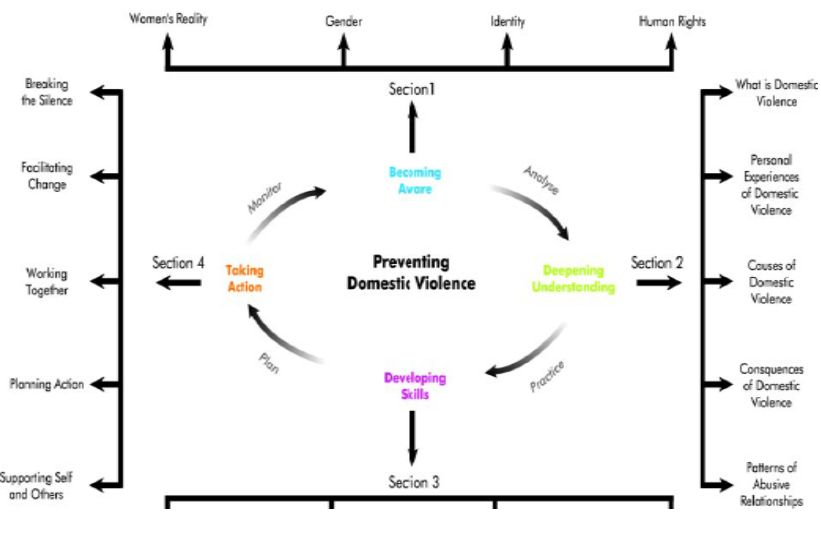Campaigns aiming at behaviour change tend to require more complex theories of change, as human attitudes and behaviour are influenced by multiple, complex factors that resist being subsumed under simple rules or linear cause-to-effect chains. For example, a campaign may seek to guide an audience towards a narrowly circumscribed action, such as calling a telephone hotline to seek help, which might imply that a relatively simple theory of change could suffice:

However, to ensure that survivors actually use the number advertised, multiple factors that encourage or prevent them from calling the line need to also be taken into account. For example, where domestic violence (DV) is widely considered to be a normal part of married life, women may feel they may be rebuked if they call the hotline. In that case, the theory of change needs to determine how to make it clear to DV survivors that their calling the helpline is legitimate, will be welcomed and may contribute to improving their situation.
Nevertheless, the fact that a theory of change is not easily expressed in a few words does not mean it won’t be effective. Examples or visualization, such as the map by Raising Voices shown below, help to identify the main drivers of change.
It is recommended to draw on existing theories, e.g. from social psychology and communication science, when determining an appropriate theory of change for behaviour change campaigns.
Examples: Campaigns that aim to trigger learning and personality development processes among their target audience require theories of change that take into account

the complexity of human thinking and behaviour. Promising examples are Raising Voices in Uganda and We Can in South Asia. Under the Raising Voices “stages of change” model, individual community members are guided through a learning process which begins with a critical exam of one’s own, individual attitudes and behaviour about VAW and equality between women and men, and leads to concrete, individual and collective action for change. In parallel, mass scale communication, e.g. through national media, creates an atmosphere fostering such change. Raising Voices visualizes this theory of change as shown in the table below (Naker & Michau, 2004. Rethinking Domestic Violence...). It would be difficult to depict the complex processes that happen at several levels in a more linear manner.
The We Can Campaign model launched by Oxfam in 2004, consists of the following layers: (a) the campaign has created an alliance of more than 2,400 member organizations across six countries in South East Asia (Bangladesh, Sri Lanka, India, Nepal, Pakistan and Afghanistan), whose purpose it is to (b) recruit individuals to become volunteer change makers, who (c) commit themselves to refrain from violence in their own lives and (d) promote the campaign message (“Women are no less valuable than men. Violence against women is unacceptable”) with at least ten more persons, thus triggering a chain reaction of attitude change across society (Raab, 2009. The We Can End All Violence against Women Campaign..).